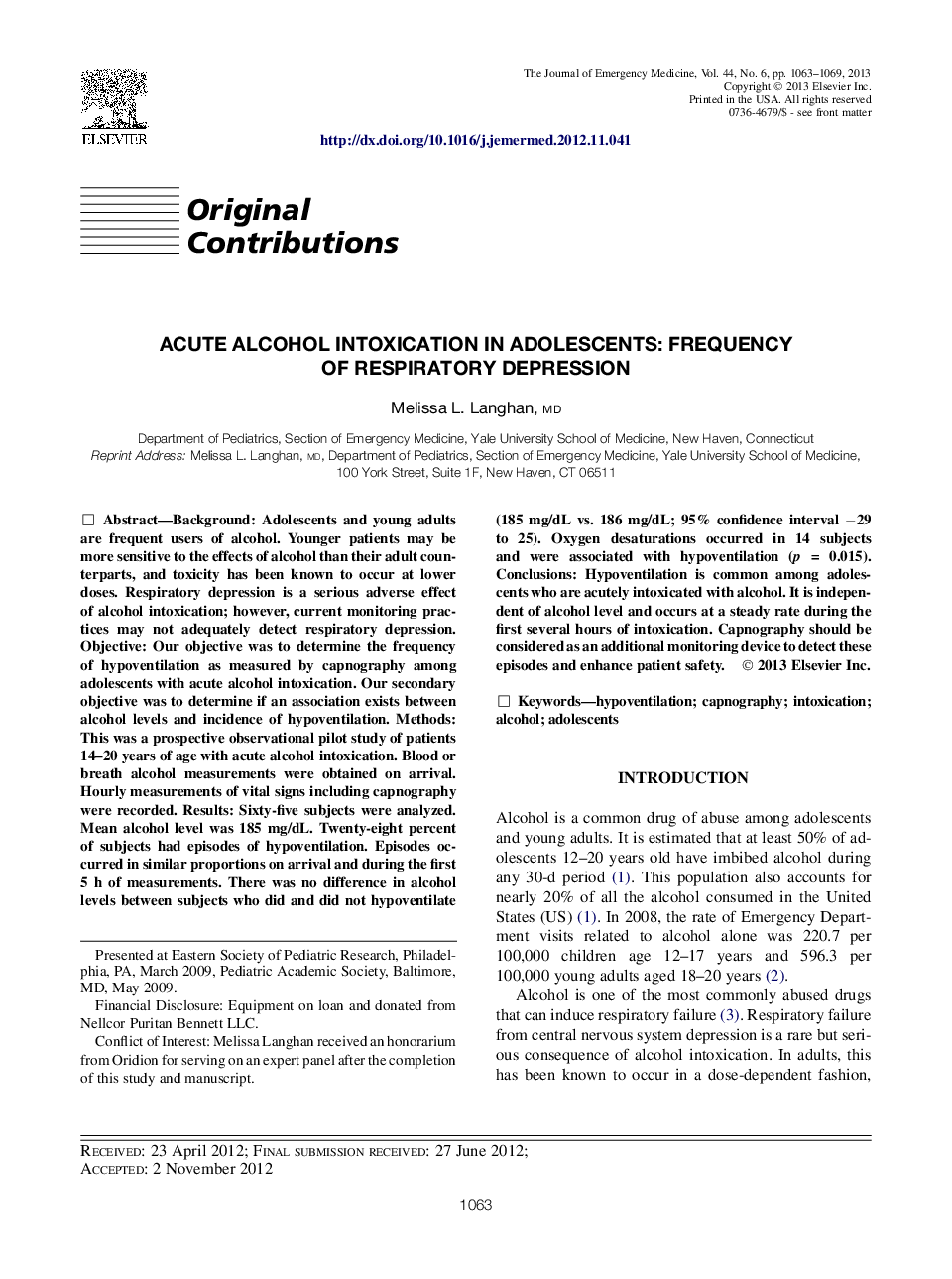| Article ID | Journal | Published Year | Pages | File Type |
|---|---|---|---|---|
| 6085310 | The Journal of Emergency Medicine | 2013 | 7 Pages |
BackgroundAdolescents and young adults are frequent users of alcohol. Younger patients may be more sensitive to the effects of alcohol than their adult counterparts, and toxicity has been known to occur at lower doses. Respiratory depression is a serious adverse effect of alcohol intoxication; however, current monitoring practices may not adequately detect respiratory depression.ObjectiveOur objective was to determine the frequency of hypoventilation as measured by capnography among adolescents with acute alcohol intoxication. Our secondary objective was to determine if an association exists between alcohol levels and incidence of hypoventilation.MethodsThis was a prospective observational pilot study of patients 14-20 years of age with acute alcohol intoxication. Blood or breath alcohol measurements were obtained on arrival. Hourly measurements of vital signs including capnography were recorded.ResultsSixty-five subjects were analyzed. Mean alcohol level was 185 mg/dL. Twenty-eight percent of subjects had episodes of hypoventilation. Episodes occurred in similar proportions on arrival and during the first 5 h of measurements. There was no difference in alcohol levels between subjects who did and did not hypoventilate (185 mg/dL vs. 186 mg/dL; 95% confidence interval â29 to 25). Oxygen desaturations occurred in 14 subjects and were associated with hypoventilation (p = 0.015).ConclusionsHypoventilation is common among adolescents who are acutely intoxicated with alcohol. It is independent of alcohol level and occurs at a steady rate during the first several hours of intoxication. Capnography should be considered as an additional monitoring device to detect these episodes and enhance patient safety.
